
There have been numerous iterations of the Nikkor 50mm, from the f/1.2 all the to f/1.8 D or G and I had wanted to see how the earlier optics would hold up against the current affordable options of the f/1.8D and f/1.8G. I then came across the f/1.4 AI-S.
The 50mm f/1.4 AI-S has had a long life with my copy dating from the early 1980s and the lens still currently in production with a ~470USD price tag. From my initial research, I was a little surprised at the lack of in-depth information or Nikkor 50mm f/1.4 AI-S reviews except for the entries at Shashinki and Momentcorp. There was also minimal information from Bjørn Rørslett and on his sister site.
So as my collection of thoughts is dumped here, this will represent my subjective experiences of the Nikkor 50mm f/1.4 AI-S with some comparisons against the 50mm f/1.8D and 50mm f/1.8G that I've used extensively.
Basics
As with other AI-S lenses, the f/1.4 is manual focus only although it will meter TTL on the higher end digital bodies. The focus ring has a nice resistance to it, whilst not stiff, which is pleasing to use when smoothly reaching focus. However, consistent with design at the time, the lens barrel extends as we go from infinity to close distances. Aperture selection is through the full-stop 'click' aperture ring that is now lost to history with the modern AF-S offerings.The lens is beautifully constructed from mental, although the focus ring could be a little wider for some tastes. Of course, the f/1.4 AI-S's focus ring does not suffer from movement as per the f/1.8D - for those that haven't experience this, the f/1.8D's focus ring moves as the camera body's screw motor drives the autofocus.
The Three
For this discussion, here are a set of 100% crops, from left to right: 1.4 AI-S, 1.8D, 1.8G. These sample images, converted from NEF within CNX2, were taken at base ISO under the same lighting conditions, where ambient does not contribute to the final exposure. The focus distance was around 5ft.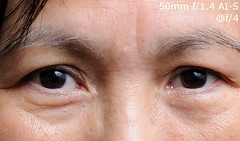
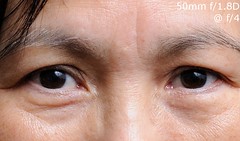
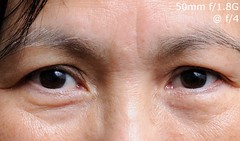
Colour
Colour rendition appears to change from lens to lens and this is no different between these three. The older lens produces images that have a slight magenta tint in the controlled environment but this is preferable to the 1.8D images that always gave me greenish images - the modern 1.8G provides the most neutral skin tones from the camera capture.Of course, the colours can be tweaked in post: in CNX2, the Colour Balance step can be used to remove the tint or by use of a WB reference
The f/1.4 AI-S's images consist of good levels of contrast along with pleasing colour under most ambient conditions, even at higher (reduced dynamic range) ISO.

1/50th f/1.4 ISO1000
Sharpness
Wide open these are expectably soft with the f/1.8D probably being the softest. However, stopping down to f/4, the role is reversed with the f/1.8D providing the best performance with the f/1.4AI-S coming in second and pushing out the newest sibbling into last place. This however is not to say the f/1.8G is bad a f/4 but it's siblings do better.At f/2.0 and f/2.8 however, both the f/1.4 AI-S and the f/1.8G outperform the f/1.8D though and critically for me, wide-open down to f/2.8 is my normal shooting aperture since I spend a lot of time shooting people.
Whilst the f/1.4 AI-S wide open is a little soft with some signs of chromatic aberrations, the images are still very much usable.

1/250th f/1.4 ISO200
This is the 100% NEF crop saved to jpeg for the above 50mm f/1.4AI-S image - the focus was taken from the lower eyelid. Focus distance around 4ft.
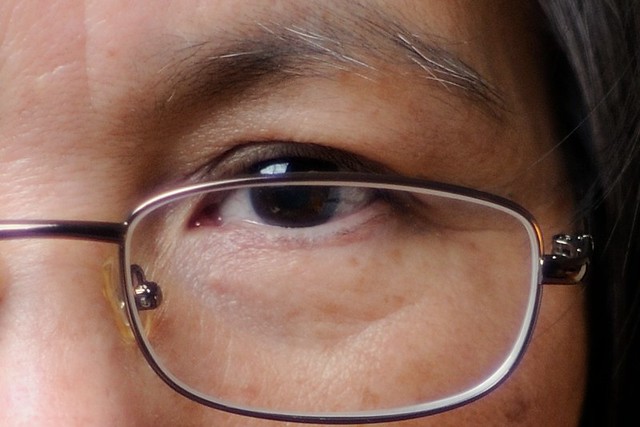
50mm f/1.4 AI-S - 1/250th f/1.4 ISO200
For comparison, this is the 100% NEF crop saved to jpeg for a 85mm f/1.4D with the camera's autofocus operating under limited ambient light - an ambient exposure in the room was around 1/60th f/1.4 ISO1000 - so this may have affected the autofocus accuracy. The same camera focus point was used for both.
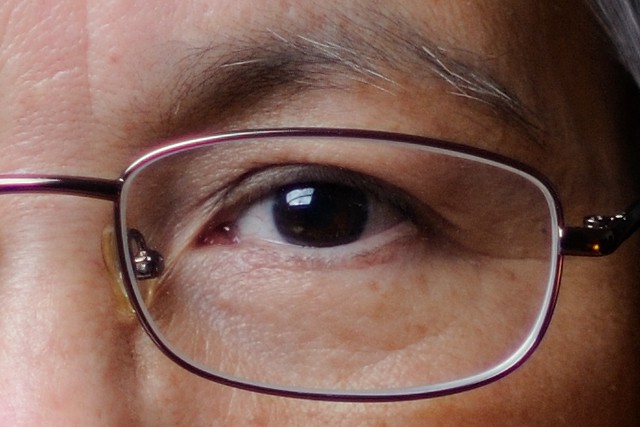
85mm f/1.4D - 1/250th f/1.4 ISO200
As we can observe, the 50mm f/1.4's result is quite acceptable in relative terms compared to a moderately, and often labelled 'legendary', modern Nikkor.
Stopped down to f/2, the f/1.4 is a little sharper - the image below has missed focus on closest eye but we can observe the lower eyelashes on the far eye.

1/250 f/2 ISO200

Bokeh
The wide aperture was one of the draws of this lens. Even at moderate distance behind focus, bokeh is pleasingly smooth. With objects further away, the rendition is beautifully smooth.
1/60th f/1.4 ISO800
Point light sources within the center of the frame are reasonably round but towards the corner they tend to become elipical but not in a bad way although all point light sources seem to exhibit an outer ring.
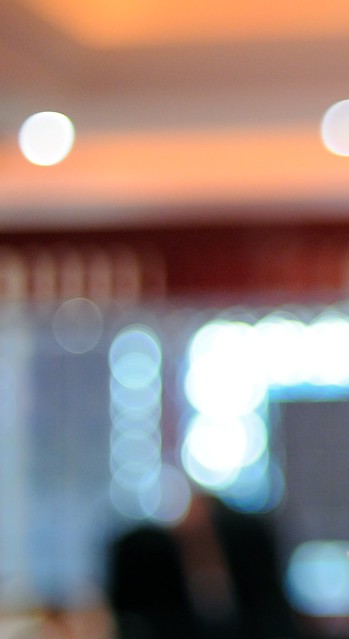
1/60th f/1.4 ISO800
Chromatic Aberations
Whilst the following examples are extreme conditions we can observe that newer f/1.8G lens provides better control of purple fringing although it's not significantly better than the 1977 design. However, the f/1.4 AI-S is still better than the 1995 Nikkor 85mm f/1.4D in this regard wide open.
50mm f/1.4 AI-S CA uncorrected
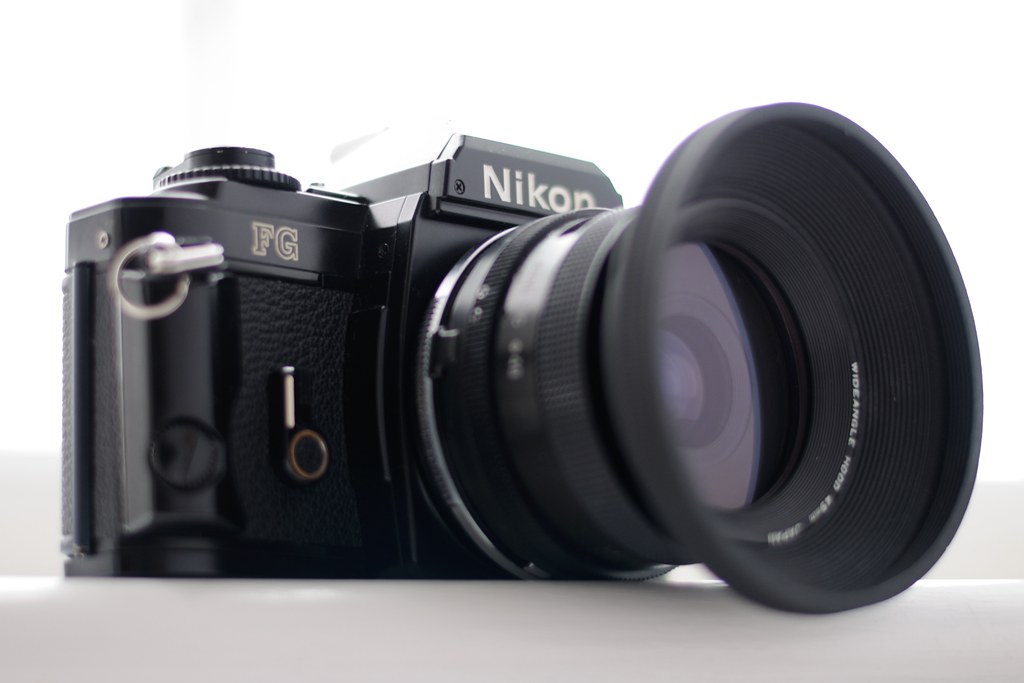
50mm f/1.8G CA uncorrected
Compared to the 85mm f/1.4D..
Whilst I enjoy the 50mms a lot, the longer focal length still has it's place for me for a more flattering perspective for headshots.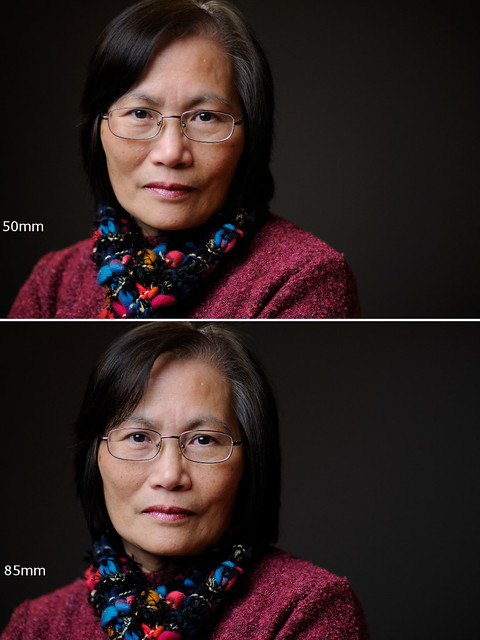
In all
The 50mm f/1.4 AI-S is a wonderful lens with the possibility of beautiful images. Whilst manual focus isn't a great strength of mine, I have still used this lens as an everyday lens outside of controlled 'studio' settings and I don't believe I've been disappointed except for my own failing to grab focus.So, what to do with the f/1.8D and G? The f/1.8G for me was a nice iteration of the f/1.8D although I think it wasn't an absolute upgrade even though the f/1.8G's bokeh was smoother and sharper at widest apertures - as such my f/1.8D sits criminally neglected.
However, the f/1.4 AI-S trumps both. The image quality is very very nice as is the build and pleasure of use but this does come at a price, with the f/1.4 AI-S being ~3x the cost of the f/1.8D.
Finally, whilst missing frames due to my slow/inaccurate manual focus abilities will annoy me, I think the f/1.4 AI-S will become my walk around lens where I can take my time to find my focus. And slowing down isn't a bad thing.

No comments:
Post a Comment